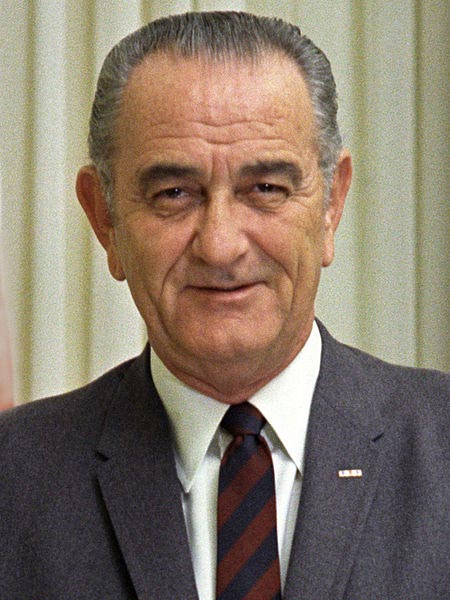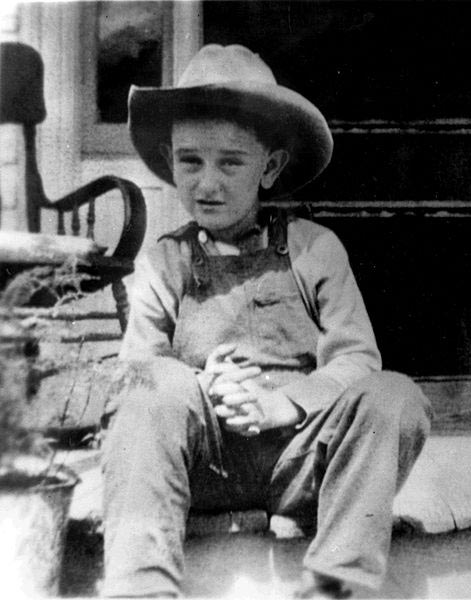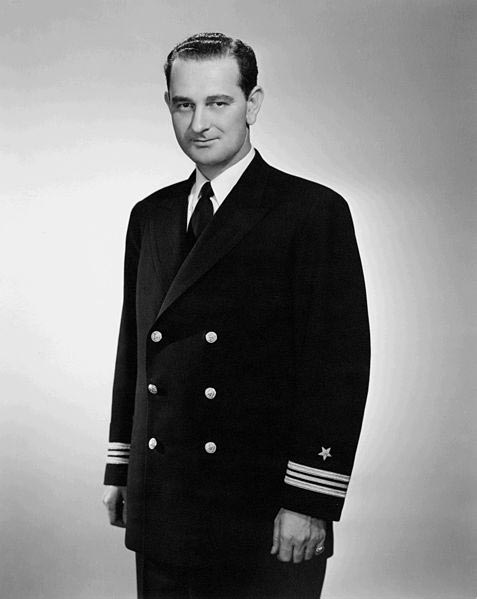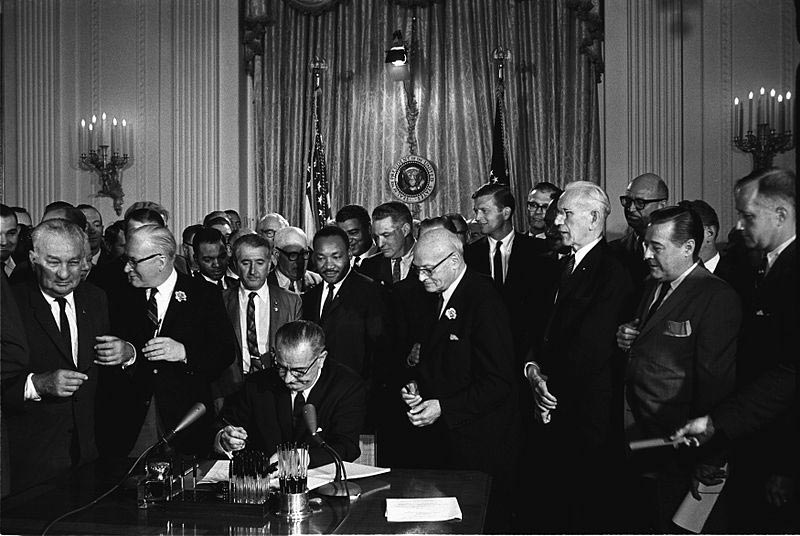| Lyndon B. Johnson | |
|---|---|
 |
|
| 36th United States President « Previous Next » |
|
| In office | Nov. 22, 1963 – Jan. 20, 1969 |
| V. President | Hubert Humphrey |
| Political Party | Democratic |
| Personal Info | |
| Born | Aug. 27, 1908 |
| Died | Jan. 22, 1973 (at age 64) |
| Religion | Disciples of Christ |
| School | Southwest Texas State Teachers College |
| Profession | Teacher |
| Signature | |
| Wife | Lady Bird Taylor |
| Children | Lynda Bird Johnson Robb Luci Baines Johnson |
| U.S. Presidents 36-43 | |
| 36. Lyndon B. Johnson (1963-1969) | |
| 37. Richard Nixon (1969-1974) | |
| 38. Gerald Ford (1974-1977) | |
| 39. Jimmy Carter (1977-1981) | |
| 40. Ronald Reagan (1981-1989) | |
| 41. George H. W. Bush (1989-1993) | |
| 42. Bill Clinton (1993-2001) | |
| 43. George W. Bush (2001-2009) | |
| List of All the Presidents |
Lyndon B. Johnson, or LBJ as he was popularly known, was born on August 27, 1908. He became President of the United States of America, the 36th, from 1963 to 1969. He became President after serving as Vice President of the country from 1961 to 1963. He was born in Stonewall, Texas to Rebekah Baines and Samuel Ealy Johnson, Jr. He was the first born of 5 children, 3 girls and 2 boys. His father was a member of the Texas House of Representatives and a businessman while his mother was the daughter of Joseph Baines, a state legislator.
The Johnson’s were of English and Scots-Irish ancestry. Not far from Stonewall is Johnson City, a small town which was named after James Polk Johnson who was a cousin of Samuel Johnson, Jr. The ancestors of LBJ settled in Texas from Georgia.
Lyndon B. Johnson finished high school at Johnson City High School in 1924 and was participant to baseball, debate, and public speaking activities. As a growing youth, he was talkative and awkward. He became class president in 11th grade. He worked his way through college in 1926 at Southwest Texas State Teachers’ College, where he dabbled in campus politics, debate, and editing The College Star, the school newspaper. He dropped out in 1927 but returned a year later and finally graduating in 1930.
He taught Mexican kids in Cotulla, Texas at Welhausen School in 1927. He also taught at Pearsall High School in 1930 in Pearsall, Texas. He also taught public speaking at Sam Houston High School in Houston, Texas. After briefly teaching in Houston, Johnson entered politics.
Lyndon B. Johnson’s Early Political Career
Lyndon B. Johnson was employed as legislative secretary under Congressman Richard M. Kleberg after campaigning for Welly Hopkins, a senator from Texas, in 1930. Congressman Sam Rayburn was a close friend of Johnson’s father, Samuel. During his stint in Congress, he became friends with media people, lobbyists, Congressmen, aides of then President Franklin D. Roosevelt, and fellow Texans like Vice President John Garner.
He went to Georgetown University Law Center for a few months then became husband to Claudia Alta Taylor on November 17, 1934. They were gifted with two daughters, Lynda Bird and Lucy Baines. He was appointed leader of the TNYA (Texas National Youth Administration) in 1935 but resigned two years later to run for a Congressional seat. His stint at the TNYA gave him the opportunity to utilize the government resources in creating education & job opportunities for the youth.
 In a special election in 1937, Lyndon B. Johnson won a seat and represented the 10th congressional district of Texas in Congress. He was congressman of Texas from April 10, 1937 up to January 3, 1949. In Congress, he allied himself with President Franklin Roosevelt and was appointed to the Naval Affairs Committee.
In a special election in 1937, Lyndon B. Johnson won a seat and represented the 10th congressional district of Texas in Congress. He was congressman of Texas from April 10, 1937 up to January 3, 1949. In Congress, he allied himself with President Franklin Roosevelt and was appointed to the Naval Affairs Committee.
His projects included improvements and rural electrification for his district. He awarded his projects to contractors whom he knew like Herman and George Brown and who later helped finance his political career. In a special election in 1941, he ran opposite W. Lee O’Daniel for a seat at the US Senate which was won by O’Daniel.
During World War II, Lyndon B. Johnson was commissioned to the Naval Reserve. In the spring of 1942, he was part of the three-man team appointed by Roosevelt to check the conditions at Southwest Pacific. In 1948, he again ran for the Senate but this time he won. As a freshman Senator, he befriended a lot of powerful and older people, including Senator Richard Russell, the most powerful Senator at that time.
 He was assigned to the Senate Armed Services Committee and in 1950 he helped form the Preparedness Investigating Subcommittee. He brilliantly handled the press and with his efficient issuance of committee reports which he ensured that each report is unanimously endorsed by the committee members, he was able to hug the headlines and brought him national attention. He served as Senate Majority Whip from 1951 to 1953 under Majority Leader, Senator Ernest McFarland from Arizona.
He was assigned to the Senate Armed Services Committee and in 1950 he helped form the Preparedness Investigating Subcommittee. He brilliantly handled the press and with his efficient issuance of committee reports which he ensured that each report is unanimously endorsed by the committee members, he was able to hug the headlines and brought him national attention. He served as Senate Majority Whip from 1951 to 1953 under Majority Leader, Senator Ernest McFarland from Arizona.
In 1952, Lyndon B. Johnson won as Senator again and became Senate Minority Leader. He worked to eliminate the seniority system of membership appointments to committees, although it was retained in terms of chairmanships. After being re-elected to the Senate in 1954, he became Majority Leader. He worked with Rayburn and President Eisenhower in passing the domestic and foreign agenda of Eisenhower.
Lyndon B. Johnson as Vice President
On November 5, 1960, he ran and won as Vice President to President John F. Kennedy and as Senator. He had Texas law changed so he can run both as Vice President and Senator. On January 3, 1961, as required by federal law, he resigned as Senator. The “Lyndon Law” was used by other people a number of times. In 1988, Lloyd Bentsen retained his Senate seat after Michael Dukakis lost to George H.W. Bush. Lloyd Bentsen ran as Dukakis’s Vice President. In 2000, Joe Lieberman also retained his Senate seat when his running partner, Al Gore, lost to George W. Bush for President. Joseph Biden, in 2008, also won the Vice Presidency and Senatorial elections but gave up the Senate seat in favor of the Vice Presidency.
Lyndon B. Johnson as Vice President
When President John F. Kennedy was assassinated on November 22, 1963, Lyndon B. Johnson was sworn in as President aboard Air Force One by Federal Judge Sarah T. Hughes at Love Field Airport in Dallas, Texas. In the 1964 Presidential Election, he won the Presidency and vowed to continue the programs and plans of John F. Kennedy.
In the early 1960s, West Germany and France imposed tariffs on the imports of US chicken to which President Johnson responded by imposing 25% tax on the imports of dextrin, potato starch, light trucks and brandy. These items were imported from Europe and approximated the value lost from the chicken sales to Europe.
The Civil Rights Act of 1964
 The Civil Rights Act of 1964, a law which made racial segregation illegal was supported and signed by President Lyndon B. Johnson. In 1965, he also supported and signed into law the Voting Rights Act which allowed colored Americans to vote for the first time. He was also the first president since Ulysses S. Grant to arrest and prosecute the Ku Klux Klan members.
The Civil Rights Act of 1964, a law which made racial segregation illegal was supported and signed by President Lyndon B. Johnson. In 1965, he also supported and signed into law the Voting Rights Act which allowed colored Americans to vote for the first time. He was also the first president since Ulysses S. Grant to arrest and prosecute the Ku Klux Klan members.
Although he was bent on instituting his anti-discrimination and anti-poverty programs, his presidency was hounded by urban riots in black neighborhoods from 1964 to 1971.
Changes to U.S. Immigration Policies
Also in 1965, the US immigration policy was changed through the passing and signing of the Immigration Act of 1965 which replaced the national origins system that has been in effect since the 1920s and replaced it with a preference system which was based on the immigrants’ skills and family relationships with US residents or citizens.
Other Administration Achievements and Policy Changes
In January 1965, Lyndon B. Johnson pushed the Great society program to Congress. He recommended passing of laws that would help education, Medicare, urban renewal, conservation, wide-scale fight against poverty, removal of hindrances to the right to vote, attack on disease, Medicaid, beautification, development of depressed regions, and control and prevention of crime, to which Congress responded by reenacting most of them into laws.
He also signed into law the Gun Control Act of 1968 which was the most far reaching and largest gun control federal laws in the history of the United States of America. He was also credited for signing into law the Medicare program which was established on July 30, 1965. It was also during the Johnson Administration that the National Aeronautics and Space Administration conducted the Gemini manned space program and the Apollo program.
Involvement The Vietnam War
Lyndon B. Johnson’s credibility was challenged starting in 1966 when what he was saying in press conferences ran contrary to what was really happening on the ground during the Vietnam War. The number of American soldiers was increased in Vietnam. By 1968, it was more than 550,000 with the rate of death at over 1,000 US soldiers a month from 1967 to 1968. Because of this, he had lost his popularity among Americans.
On March 31, 1968, he announced to the whole world that he would not run for re-election. He retired to his ranch in Stonewall, Texas after leaving the White House in January 1969. He wrote his memoirs, The Vantage Point, in 1971. He died of a massive heart attack at the age of 64 on January 22, 1973 at his ranch. He died while talking to Walter Cronkite of CBS. The CBS Evening News was live on the air when Walter Cronkite abruptly cut a report on Vietnam to talk to Johnson to break the news. Cronkite was informed by Johnson’s press secretary Tom Johnson that the former president had just died.
Lyndon B. Johnson was interred in the family cemetery in Stonewall, Texas, and a few yards from the home where he was born. In his honor, Texas celebrates August 27, his birthday, as a legal holiday. In Houston, Texas, the Manned Spacecraft Center was renamed to Lyndon B. Johnson Space Center. In Dallas, the Interstate 635 was named Lyndon B. Johnson Freeway.